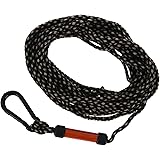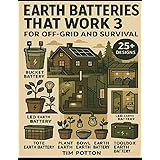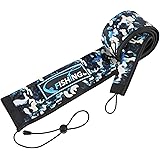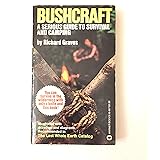In the unpredictable embrace of the wilderness, preparedness is paramount. Indeed, a staggering report suggests that over 80% of outdoor emergencies could be mitigated with the right gear and knowledge. For the dedicated bushcrafter and primitive camping enthusiast, this translates into a meticulously curated kit designed not just for survival, but for thriving. The video above meticulously details 15 must-have primitive camping tools for 2025, offering a vital snapshot of contemporary wilderness essentials. This companion guide expands upon these critical items, delving deeper into their practical applications, technical specifications, and advanced wilderness integration.
Mastering primitive camping and bushcraft involves a deep understanding of your tools, an unwavering commitment to self-reliance, and an intimate connection with the natural world. Our exploration of these tools goes beyond mere identification, focusing on the strategic thinking behind each selection and how they collectively enhance your wilderness skills, ensuring you are equipped for any scenario the backcountry might present.
Essential Gear for Preparedness and Immediate Repair
The Indispensable Multi-Tool: Your Pocket Powerhouse
As highlighted in the video, the multi-tool, like the robust Victorinox Swiss Tool, serves as an invaluable ‘insurance policy’ for your primary gear. Its strength lies in its versatility, offering crucial utility for unexpected repairs. Beyond basic pliers for handling hot cookware and robust screwdrivers for minor gear adjustments, a high-quality multi-tool often includes files for fine metalwork, awls for piercing leather or canvas, and saws for small wood processing. The ingenuity of wrapping duct tape around its handle is a masterstroke; this compact solution provides readily available repair material, blister prevention, and even a potent fire accelerant in a pinch, demonstrating how integrated utility can elevate your bushcraft toolkit.
Emergency Heat Shield: The Advanced Survival Bivvy Sack
Primitive camping environments can turn treacherous rapidly, with sudden temperature drops and unexpected precipitation presenting significant hypothermia risks. Traditional foil blankets are often inadequate due to their fragility and lack of breathability. A modern survival bivvy, such as the SOL Escape Bivvy, represents a critical leap forward. Its advanced breathable membrane allows internal moisture to escape, preventing the clammy discomfort and evaporative cooling associated with non-breathable options. The bivvy’s ability to reflect over 90% of your body heat back and provide an instant 10-degree temperature boost to your sleep system can be a literal lifesaver. Furthermore, its ultra-light design, weighing mere ounces, and high visibility make it an ideal emergency signaling panel, a critical consideration when far from established trails.
First Defense: High-Performance Bushcraft Gloves
Your hands are arguably your most important primitive camping tools, constantly exposed to the rigors of wood processing, fire management, and tool handling. Selecting the right bushcraft gloves is not merely about protection but about maintaining crucial dexterity. Durable, well-fitting leather gloves, like the Mechanix M-Pact, offer a balanced blend of cut, splinter, and abrasion resistance while allowing for the fine motor skills required for carving or knot tying. Furthermore, the video’s advice to carry an extra pair in a waterproof bag is non-negotiable; wet hands significantly increase the risk of blisters and can severely impede your ability to perform critical tasks, transforming a minor inconvenience into a serious survival impediment.
Core Sustenance and Safety Systems
Brighten the Night: The Variable Output Headlamp
Operating efficiently and safely after sundown necessitates reliable, hands-free illumination. The headlamp, exemplified by models like the Black Diamond Spot 400, offers multiple brightness modes, from a focused beam for distant scanning to a dim setting perfect for reading maps or organizing gear inside a shelter. The red light feature is particularly crucial, as it preserves night vision by minimizing pupil constriction, a significant advantage for observing wildlife or moving discreetly. An IPX-rated waterproof body ensures functionality in adverse conditions, while the simple yet vital practice of locking the power switch prevents accidental activation and preserves precious battery life, a common pitfall in extended wilderness excursions.
Deceptively Simple, Yet Critical: The Titanium Cup
A vessel capable of direct flame exposure is fundamental for wilderness survival. Titanium cups, such as the Toaks 750 ml pot, excel due to their exceptional strength-to-weight ratio and ability to withstand high temperatures without deforming. This single item serves as your primary cooking pot and, more critically, your water purification tool. The recommendation to boil water for at least three minutes is a scientifically proven method to eliminate virtually all bacteria, viruses, and protozoa, offering a reliable safeguard against waterborne illnesses when a filter is not available or has failed. Its capacity for being hung over a fire or nestled directly in coals offers unparalleled flexibility in primitive cooking scenarios, ensuring consistent access to safe drinking water.
Non-Negotiable: The Emergency First Aid Kit
Engaging in bushcraft invariably involves handling sharp objects and working in environments far from immediate medical assistance, making a customized first aid kit an absolute imperative. While a base kit like the Adventure Medical Kits provides a solid foundation, personalized customization is key. Beyond trauma pads, blister treatments, and wound closure strips, consider adding specific medications, a roll of self-adhering vet wrap for robust bandaging or sprain support, and sterile water cleansing wipes. Knowledge of wound packing techniques and immediate infection prevention protocols empowers you to be your own first responder, potentially mitigating severe complications from common bushcraft injuries like deep cuts, punctures, or burns.
Fail-Safe Navigation: The Compass and Topographic Map
Relying solely on electronic navigation in the wilderness is a perilous gamble. Batteries die, and signals vanish. The traditional compass and topographic map, therefore, remain the gold standard for reliable navigation. A baseplate compass, like the Suunto MC2, offers features such as adjustable declination correction to account for the difference between true north and magnetic north, and a sighting mirror for taking precise bearings. Pairing this with a waterproof, laminated map and possessing the skills to orient your map, use triangulation for position fixing, and interpret contour lines for terrain understanding are foundational land navigation competencies. These tools, when mastered, empower you to navigate confidently through complex terrain, ensuring you always know your position and direction of travel, irrespective of technological limitations.
Mastering the Wilderness: Tools for Skill and Efficiency
Arguably the Most Important Non-Cutting Tool: The Sharpening Stone
A dull edge is not only inefficient but profoundly dangerous, as it requires more force, increasing the risk of slippage and injury. The sharpening stone is therefore a critical component of any bushcrafter’s kit. A compact, dual-sided sharpener, such as the Fallkniven DC4, provides both a diamond side for efficient edge repair and a ceramic side for honing a razor-sharp finish. Understanding specific sharpening techniques, like the Scandi grind for tools like the Morakniv, is essential for maintaining optimal edge geometry. Consistent angle maintenance and sharpening only what is necessary prolong the life of your blade and ensure your most vital cutting tools are always in peak condition, enhancing both safety and productivity in the field.
Securing Your Hydration: The Advanced Water Purification System
Access to safe drinking water is non-negotiable for wilderness survival. Modern water purification systems, particularly hollow fiber membrane filters like the Sawyer Squeeze, offer robust protection against bacteria and protozoa without relying on chemicals or boil times. These filters achieve their efficacy by physically blocking pathogens through microscopic pores, offering a high flow rate and impressive longevity, with some models filtering up to 100,000 gallons. While highly effective, understanding the limitations—such as most filters not removing viruses—is crucial. For virus-prone areas, a combination approach, perhaps with chemical purification tablets or boiling, provides ultimate security against backcountry belly, a debilitating affliction that can quickly compromise a trip.
The Multi-Strand Marvel: 550 Paracord
Carrying at least 100 feet of 550 paracord is a wilderness axiom. Its 7-strand nylon core can be disassembled for an astonishing array of uses, from fishing line and sewing thread to snare wire and even fire tinder. Specialized versions, like the Titan SurvivorCord, ingeniously integrate fire tinder, fishing line, and brass utility wire directly into the core, significantly expanding its functional utility in a compact package. This multi-strand marvel is indispensable for shelter construction, gear repair, securing food from animals, creating emergency lashings, and countless other tasks that demand strong, versatile cordage. Proficiency in essential knots, such as the bowline, taut-line hitch, and prusik, unlocks the full potential of this ubiquitous bushcraft item.
Advanced Shelter and Fire Craft
Cracking the Top Five: The Lightweight Tarp Shelter System
Moving beyond traditional tents, a lightweight tarp shelter system offers unparalleled versatility and weight savings. Tarps crafted from advanced materials like silnylon or silpoly, and particularly Dyneema Composite Fabric (DCF) as seen in Hyperlite Mountain Gear tarps, provide exceptional waterproofing and durability at minimal weight. The true power of a tarp lies in its adaptability, allowing for a multitude of pitch configurations—from a simple A-frame or lean-to to more complex plow points or half-pyramids—to suit varying weather conditions and terrain. Furthermore, a tarp encourages a more intimate connection with the environment, offering open views and better ventilation, a hallmark of true primitive camping.
Guaranteeing Fire: The Ferrocerium Rod and Magnesium Bar Combo
Reliable fire ignition is a cornerstone of wilderness survival, providing warmth, cooking capability, water purification, and psychological comfort. The ferrocerium rod, particularly when paired with a magnesium bar, stands as the most robust and weather-resistant fire starter. A high-quality ferro rod, like those from Light My Fire or Exotac, generates an impressive 3,000° Fahrenheit spark capable of igniting suitable tinder even when wet. The magnesium bar, in turn, provides an extremely hot, long-burning flame that can ignite less-than-ideal tinder. Unlike matches or lighters, a ferro rod has a nearly indefinite shelf life and operates flawlessly in virtually any weather condition, making it the ultimate fail-safe for fire craft in bushcraft and primitive camping scenarios.
The Indispensable Cutting & Processing Tools
The Power Factor: The Compact Axe or Hatchet
For efficient wood processing beyond what a knife can handle, a compact axe or hatchet is indispensable. Tools like the Fiskars X7 offer a lightweight, virtually indestructible option for beginners, while the Hultafors Hultan provides a masterfully balanced, classic feel for more experienced users. An axe or hatchet excels at felling small trees, delimbing branches, and efficiently splitting larger firewood into manageable pieces. This dramatically reduces the effort and time required for fuel procurement compared to solely relying on batoning with a knife, significantly enhancing camp efficiency. Mastery of safe felling and splitting techniques is paramount, ensuring both productivity and personal safety in the process.
The Speed Demon: The Folding Saw
When processing wood up to six inches in diameter, a folding saw offers a superior alternative to batoning with a knife. Saws like the Silky Gomboy are renowned for their razor-sharp Japanese blades and secure locking mechanisms, delivering faster, cleaner, and significantly safer cuts. The precision of a saw minimizes material waste and reduces the physical exertion required, making it an ideal tool for efficiently bucking logs for a campfire or processing timber for shelter construction. Its compact, foldable design ensures easy and safe transport within a pack, solidifying its role as a critical tool for serious woodcraft in primitive camping.
The Undisputed Champion: The Fixed-Blade Bushcraft Knife
The fixed-blade bushcraft knife is not merely a tool; it is the cornerstone of all wilderness skills, the ultimate expression of self-reliance. A full tang, high carbon steel knife, such as the iconic Morakniv Companion Heavy Duty for beginners or premium options like the Esee 4 or Benchmade Bushcrafter, is essential. The full tang construction ensures maximum strength and durability, as the blade steel extends through the entire handle. High carbon steel offers superior edge retention and is easier to sharpen in the field, though it requires more maintenance to prevent rust. This single tool is indispensable for carving, food preparation, fire-starting tasks like featherstick creation, and batoning wood. Its versatility and reliability make it the single most important primitive camping tool in your arsenal, a true extension of your will in the wild.











